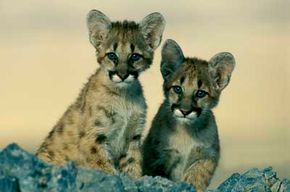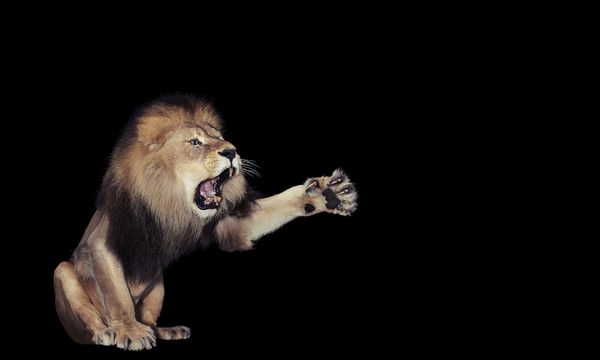It sounds like the vocal equivalent of fingernails running down a chalkboard. Or perhaps it's closer to the sound of screeching brakes when a car slams to a halt. Then again, if you listen to the momentary wail of a house cat after its tail has been stepped on, you may hit the auditory nail on the head.
Pinpointing the precise tonal quality of a cougar's scream is a faulty science since wildlife researchers and laymen alike rarely hear the piercing call. We do know, however, that it sounds exactly like the shriek of a mountain lion, puma and panther. Why do these cats exhibit similar cries? They all share the same species, Felis concolor, but different common names.
Advertisement
The Latin translation of the species name means "solid-colored cat," which sums up its appearance succinctly, but the list of nicknames doesn't end there. Where humans have nicknames like Beth, Betty, Liz, Lilly and Buffy that all refer to the name Elizabeth, you might hear about cougars under the monikers swamp devil, ghost walker, catamount, night crawler, mountain screamer, king cat or deer tiger. Research has uncovered more than three dozen different labels for the North American cat [source: Busch]. The animal owes this abundance of names to its widespread natural habitat that stretches from the southern tip of Argentina to central Canada, and across the United States, coast to coast.
Cougars largely prey on white-tailed deer, although they may eat livestock or pets in more populated areas. They reign at the top of the food chain in their habitats, hunting with the same stalk-and-pounce method as leopards.
Catching sight of a cougar doesn't happen often. The largely solitary animals keep a low profile, although the number of attacks on humans in the United States and Canada has risen since 1990 [source: Kemper]. Due to their elusive nature, wildlife experts can only estimate that around 30,000 live in the American West today. This is a resurgence since their extermination in the Eastern region of the country in the early 20th century [source: Kemper]. When we hear cougars scream sporadically and read about occasional attacks, we're reminded that cougars are alive and well.
Advertisement



